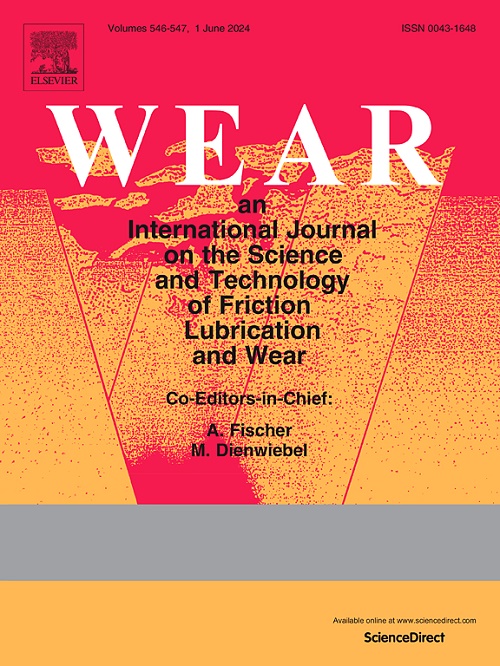颗粒湿壁冲击损伤的特征:液膜参数的影响
IF 5.3
1区 工程技术
Q1 ENGINEERING, MECHANICAL
引用次数: 0
摘要
颗粒撞击损坏严重影响能源和化工工艺设备的安全稳定运行。在颗粒输送过程中,可能会在壁面上形成液膜,从而影响颗粒效应造成的损坏机制。本研究探讨了液膜参数(尤其是粘度和厚度)对壁面损伤的影响。研究采用羟丙基甲基纤维素(HPMC)溶液作为液膜,通过使用颗粒(45 号钢)和带有液膜的壁(1060 号铝合金)进行冲击损伤实验,考察了液膜粘度和厚度的影响。结果表明,液膜的存在可以抑制壁面损伤。增加液膜粘度和厚度可减轻壁面损伤,但它们对损伤特征参数转折点(冲击角度和速度)的影响不同。最后,研究通过引入液膜的影响系数,建立了干湿冲击之间的相关性。这揭示了影响系数的变化规律,并提出了湿冲击损伤模型,为工艺设备的损伤预测提供了参考。本文章由计算机程序翻译,如有差异,请以英文原文为准。
Characteristics of particle-wet wall impact damage: Effects of liquid film parameters
Particle impact damage significantly affects the safe and stable operation of energy and chemical process equipment. During particle transportation, a liquid film may form on the wall, influencing the damage mechanism caused by particle effect. This study investigates the effects of liquid film parameters, specifically viscosity and thickness, on wall damage. Hydroxypropyl Methylcellulose (HPMC) solution was applied as a liquid film, and the effect of the liquid film's viscosity and thickness was examined through impact damage experiments using a particle (45 steel) and a wall (1060 aluminum alloy) with the liquid film. Results indicate that the presence of a liquid film can inhibit wall damage. Increased liquid film viscosity and thickness reduce wall damage, but they affect the turning points of damage characteristic parameters differently concerning impact angle and velocity. Finally, the study establishes correlation between dry and wet impact by introducing the effect coefficient of liquid film. This reveals the alteration rules of the influence coefficient and proposes a wet impact damage model, providing a reference for the damage prediction in process equipment.
求助全文
通过发布文献求助,成功后即可免费获取论文全文。
去求助
来源期刊

Wear
工程技术-材料科学:综合
CiteScore
8.80
自引率
8.00%
发文量
280
审稿时长
47 days
期刊介绍:
Wear journal is dedicated to the advancement of basic and applied knowledge concerning the nature of wear of materials. Broadly, topics of interest range from development of fundamental understanding of the mechanisms of wear to innovative solutions to practical engineering problems. Authors of experimental studies are expected to comment on the repeatability of the data, and whenever possible, conduct multiple measurements under similar testing conditions. Further, Wear embraces the highest standards of professional ethics, and the detection of matching content, either in written or graphical form, from other publications by the current authors or by others, may result in rejection.
 求助内容:
求助内容: 应助结果提醒方式:
应助结果提醒方式:


